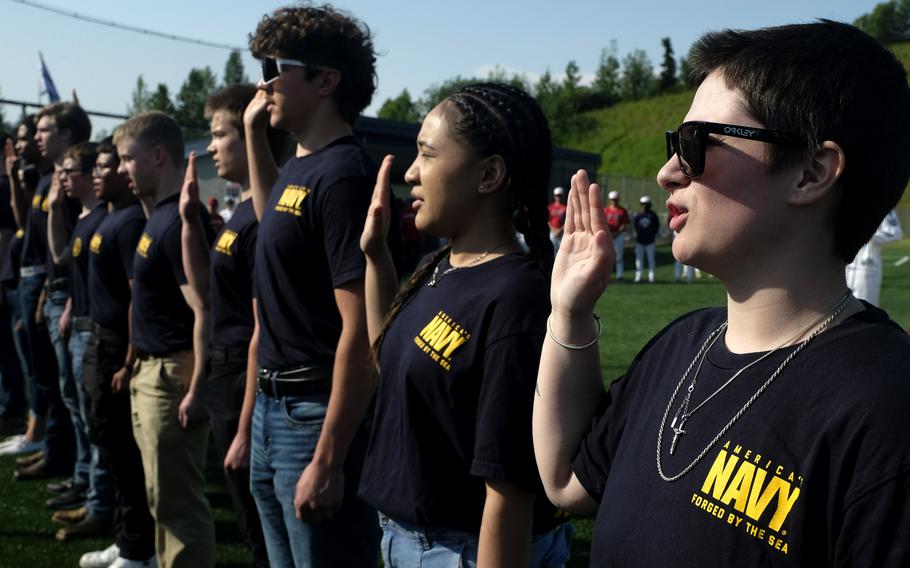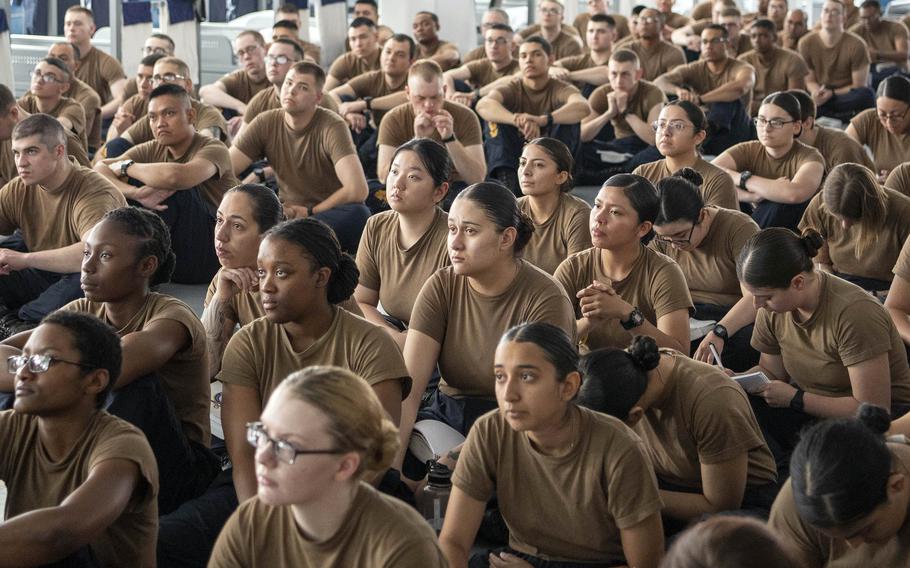
Future U.S. Navy sailors recite the oath of enlistment during a ceremony in Eagle River, Alaska, June 19, 2025. The Navy did not properly document how it turned around sluggish recruitment in 2024, according to a Defense Department Inspector General report dated June 27, 2025. (Torrey Lee/U.S. Navy)
The Navy reversed a major recruiting slump in 2024 and even met its 2025 goals early, but a lack of documentation on how it achieved those gains threatened to undermine future efforts, a government watchdog agency said.
Accepting lower Armed Forces Qualification Test scores, allowing more nonmedical waivers and increasing the maximum recruitment age from 39 to 41 were among the initiatives that expanded the recruitment pool, the Defense Department inspector general said in a June 27 report.
The Navy submitted revised documentation on its recruitment process earlier this month to meet the IG’s recommendation, the report stated.
In 2024, the Navy began daily operations meetings for a more data-driven approach, the report said.
It also added staffing to address a backlog of about 8,600 pending medical waiver requests. That led to 10,917 approved waivers, which resulted in 5,845 recruits in May and June last year.
Instead of taking about 40 days, the medical waiver process now averages just one day per decision, the report said.
Those changes helped the Navy contract 40,978 future sailors in 2024, surpassing its goal by 378. Earlier this month, the service announced that it already had met its 2025 goal of 40,600 future sailors.

Recruits sit in formation during team skills training at U.S. Navy Recruit Training Command, Great Lakes, Ill., June 3, 2025. According to a recent Defense Department Inspector General report, the service did not properly document how it turned around sluggish recruitment in 2024. (Stuart Posada/U.S. Navy)
The rebound follows a dismal 2023 recruiting year that saw the service miss its active-duty enlisted recruit goal by 7,464.
However, the service didn’t initially document the 2024 changes to its medical waiver and operational recruitment processes, IG inspectors found.
The omission occurred because recruitment personnel were focused on implementing the new processes and “lacked the time to develop and publish guidance documenting the changes,” Navy officials explained in the report.
During the evaluation, service officials said Navy Recruiting Command was taking steps to formalize the changes, such as documenting the establishment of a recruiting operations center, and eliminating unneeded paperwork and other roadblocks for recruiters.
This would help ensure that the changes are maintained as personnel rotate out of the command, the IG said.